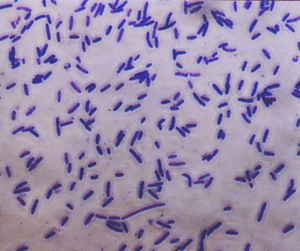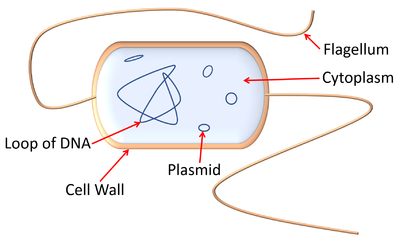Difference between revisions of "Bacteria"
| Line 1: | Line 1: | ||
==Key Stage 3== | ==Key Stage 3== | ||
===Meaning=== | ===Meaning=== | ||
| + | [[File:Bacteria.png|right|300px|thumb|A magnified image of several bacteria.]] | ||
Bacteria are [[unicellular]] [[microorganism]]s that have no [[nucleus]], [[mitochondria]] or [[chloroplast]] but do have [[cytoplasm]], a [[cell membrane]] and a [[cell wall]]. | Bacteria are [[unicellular]] [[microorganism]]s that have no [[nucleus]], [[mitochondria]] or [[chloroplast]] but do have [[cytoplasm]], a [[cell membrane]] and a [[cell wall]]. | ||
| Line 10: | Line 11: | ||
: [[Bacteria]] can cause disease but some are important to keep us healthy. | : [[Bacteria]] can cause disease but some are important to keep us healthy. | ||
: Some [[bacteria]] have a tail called a [[flagellum]]. | : Some [[bacteria]] have a tail called a [[flagellum]]. | ||
| + | |||
| + | {| class="wikitable" | ||
| + | |- | ||
| + | |[[File:BacteriaDiagram.png|center|400px]] | ||
| + | |- | ||
| + | | style="height:20px; width:200px; text-align:center;" | | ||
| + | |} | ||
Revision as of 19:57, 4 September 2018
Key Stage 3
Meaning
Bacteria are unicellular microorganisms that have no nucleus, mitochondria or chloroplast but do have cytoplasm, a cell membrane and a cell wall.
About Bacteria
- Bacteria can cause disease but some are important to keep us healthy.
- Some bacteria have a tail called a flagellum.

